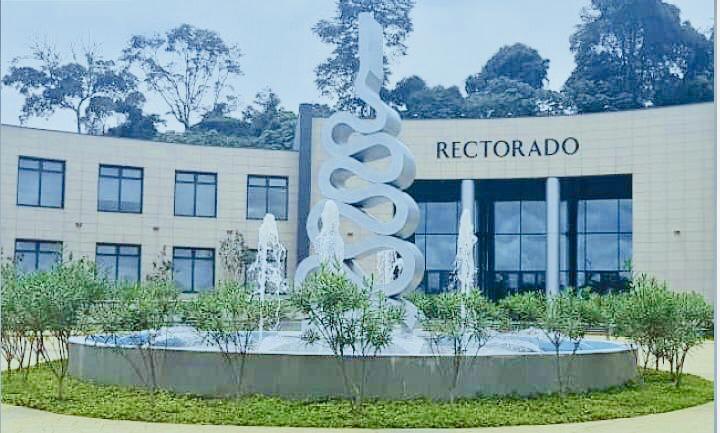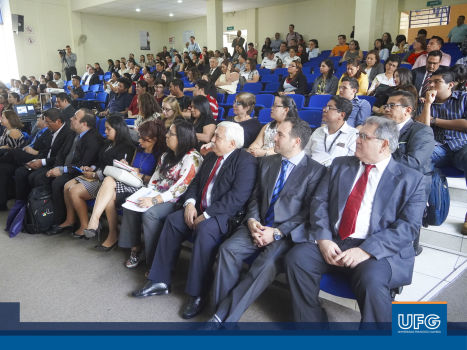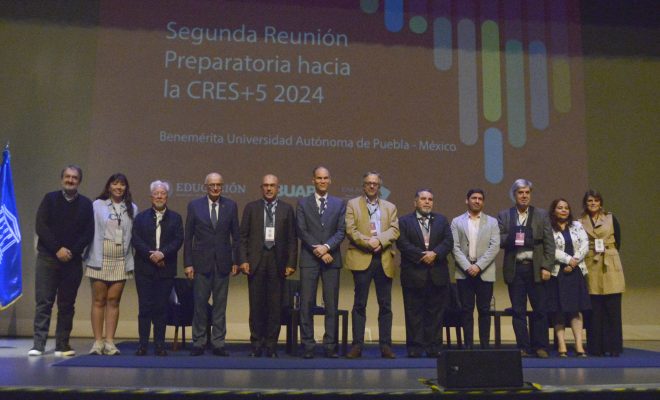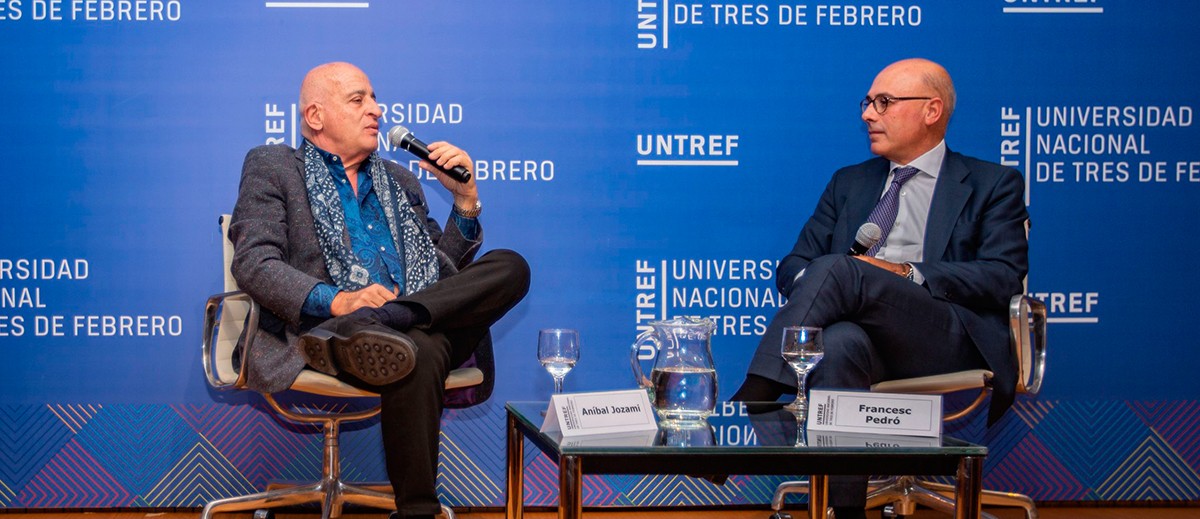The evolution of higher education governance structures at a national level: lessons from the Peruvian case

By Francesc Pedró and Harold Mera | These past days, the Education Commission of the Peruvian Congress approved the ruling of the Law of Organization and Functions of the Ministry of Education which, among many other novelties, divides the functional structure of the Ministry of Education in two educational levels: basic education and higher education. In fact, the bill has been accepted by the National Education Council, the National Assembly of Regional Governments, the Association of Municipalities of Peru and the Network of Rural Municipalities of Peru, among others, and represents a very important qualitative change after almost 30 years of the current law. The proposed law seeks to facilitate the coordination of university education, technological, pedagogical and art institutes and productive technical centers through the creation of a Vice-Ministry of Higher Education. This vice-ministry, in the words of Ricardo Cuenca, Minister of Education, “will run the public policies of higher education and will also ensure the sustainability of the national policy of university and technical higher education” in the horizon of the national educational project towards 2036.
What can we expect? Will this reform be a step forward to effectively promote the development of the higher education sector in the country? To answer this question, it is important to review international trends, especially at the regional level, regarding the specialization of ministerial structures in higher education. What follows is a brief synthesis of trends that can contribute to the policy and administrative debates on this issue.
1. The outcome of this reform will add Peru to the group of countries in the region that have specialized ministerial structures in higher education. Nine (9) countries in the region have organizations with a greater or lesser degree of specialization in higher education within the corresponding ministries: Colombia, Chile, Brazil, Argentina, Bolivia, Ecuador, Paraguay and Mexico, in addition to Peru. Cuba and Venezuela, on the other hand, have ministries entirely dedicated to higher education. The resulting processes, which have taken place over the last two decades, have accelerated the specialization of their technical-political bodies over the long term, giving them a greater degree of autonomy and participation in the definition of investment agendas through closer work with the Minister. In all cases, the fundamental reason given for specialization has been the strengthening of higher education, as can be seen in the normative reference texts in Brazil (2003), Mexico (2002), Argentina (2005), Colombia (2003), and Chile (2006 and 2010).
2. In general terms, the functions of the region’s vice ministries that were analyzed can be summarized as follows:
- Support the Minister in the improvement of dialogue and technical-political coordination with international, national and territorial stakeholders in the different instances, in order to increase the specialization of the sector to achieve intermestic goals such as equity, quality, transparency and efficiency.
- Specialization of the vice-ministry in the identification of issues on the public agenda, in more direct contact with the Ministry, and with a greater possibility of proposing investments in issues related to the governance of higher education.
- Direct feedback from the Coordination of National Higher Education Information Systems and specialized technical support to the Minister for the continuous positioning of issues relevant to the office, in the government’s investment agenda. To a greater extent if they respond to international and domestic logics, becoming intermestic topics of strategic character for the Ministry, as is the phenomenon of the virtualization of higher education.
- Generator of proposals for administrative acts, improvements and updates in regulatory matters that increase the standards of public efficiency in the regulation of the equitable offer of higher education, quality, evaluation and certification, enhanced by a greater generation of spaces and instances of participation.
- Consolidate itself as the technical-political arm of the ministry for the sophistication of the higher education sub-sector through active participation in all mission areas (quality improvement, greater and better availability, universality and equity in access, degrees, accountability, systematization of information, financing, synergies with STI, articulation between different actors, among others), and the corresponding stages of public policy (agenda setting, diagnosis, socialization, design, implementation, regulation, evaluation, and adjustment).
3. In this context, it can be seen that the functions that the proposal assigns to the Vice-Ministry in the Peruvian bill coincide with those prevailing in the region and result in increased specialization. To further facilitate its better functioning, and again in the light of regional experience, it would be expected that more detailed regulations would also cover functions such as:
- Under the political guidelines of the Minister, design, develop, coordinate, supervise and evaluate strategies, plans, programs and projects for the improvement of the higher education sector.
- Design, develop, implement, coordinate, monitor, regularize and evaluate national higher education information systems as well as quality systems and the granting and revocation of official licenses to public and private entities for the provision of higher education, technical and productive work services.
- Proposal of technical-political support to the Minister in the definition of sector-specific policies such as the promotion of universal access, and system equity and efficiency in the allocation of resources to the higher education system.
- Maximum coordination of stakeholders (defining them according to their political importance) at the different levels of government and the private sector, including the secondary education sub-sector, through the generation of spaces for dialogue and feedback on the overall state and functioning of the higher education system.
- Active participation in the Science, Technology and Innovation institutional framework to generate synergies with the Education sector.
- As far as possible, propose investments through national investment programs and projects under the responsibility of the Ministry, and suggest the use of financial mechanisms that can be used, within the framework of what is legally feasible.
4. In all the countries mentioned above, the processes of change and strengthening of higher education policies in the ministries of the region coincide with periods of increase in the levels of expenditure in the education and higher education sector. These reforms and strengthening processes are correlated with an increasing trend in levels of public spending on higher education in the years following the reforms. Such is the case with the growth of Brazil, Chile and Colombia up to 2018, for example, as illustrated by the following graph. As can be seen, Peru maintains in relative terms, the lowest level of public spending on higher education, among these countries, but shares the trend of increased investment in the last twenty years with all of them. The pandemic will undoubtedly have a major impact on the growth of this expenditure in the coming years.
Annual public expenditure on higher education as a % of GDP

Source: UNESCO/IESALC supported by UIS databases.
5. Regardless of the above, increases in public spending in the sector may or may not result in the specialization of sub-sectors. As McKeown (1986) argues, an administrative structure is not more operational and efficient because it is larger. An allocation of resources to strategic sectoral objectives such as the design, implementation and technical-political coordination of national information systems and subsystems in higher education, as proposed in the case of Peru, is an objective shared by a multitude of countries, which can only result in better capacities for the design, implementation and evaluation of public policies for the sector.
6. The specialization and internationalization of the higher education sector can be accelerated when funding mechanisms and internal reform processes converge (Zaman, 2015). In this sense, an increase in expenditure combined with high quality and clarity in the regulations of the higher education sub-sector can reduce the times of administrative and technical-political specialization of the vice ministry. For example, if the regulation of the functions of the Vice Ministry is concise and clear in the scope of key milestones for the sector, such as the design of the National Higher Education Information System, the State would spend less time in the prioritization of this essential public management information tool.
7. As McCowan (2016) states when comparing Kenya, Brazil and England, the principles to achieve the expansion of higher education and the quality in the generation and transmission of knowledge by the agents of the higher education system, as well as the regulations for the creation and assignment of functions to vice-ministerial organizations, should be based on the principles of accessibility, availability and horizontality. Complementarily, the regulations of higher education bodies should be strengthened in their governance through improvements in: i) public financing of higher education, ii) greater autonomy in the institutions of the system, iii) strengthening of direct communication with stakeholders, iv) diversification of funding sources and v) systematization and digitalization of the information of the higher education system.
8. It is also important to note that these developments run parallel to, and complement, the role that higher education quality assurance agencies should play. As we have suggested in specific analyses (IESALC, 2020), these agencies are destined to persist as mediation structures between public and private providers of higher education, which usually have high levels of autonomy and self-regulation, and the interests of the State, on the one hand, and of end users (students and their families), on the other. In all the countries analyzed, and Peru with SUNEDU should not be an exception, the consolidation of the State’s guiding role in higher education public policies has been accompanied by an increase in the demands for quality, and high quality or excellence, of processes and results of higher education institutions, in whose definition and application the agencies are playing a decisive role.
In short, and from an international comparative perspective, with this bill Peru joins the inevitable and desirable processes of strengthening, specialization, internationalization and qualitative improvement that higher education in the region demands, along the path to better public governance. In a scenario where higher education and research become key factors for the defeat of glocal/intermestic concerns such as inequality and the climate-environment emergency, having more specialized and reinforced public governance structures for higher education can contribute to accelerate the promotion of excellence and equity in the sector at times, such as the present, when efforts will have to be redoubled.
Bibliographic, informative and database references
UIS data base: http://data.uis.unesco.org /# OCDE data base: https://data.oecd.org/
IESALC-UNESCO report, April 2002, “Informe de Educación Superior en Colombia”, Bogotá, Colombia.
McKeown, Mary P., 1986, “Issues in higher education budgeting”, Economics of Education Review, Volume 5, 1986, Pages 159 – 163.
Zaman, Khalid, “Quality guidelines for good governance in higher education across the globe”, Pacific Science Review B: Humanities and Social Science, Volume 1, January 2015, Pages 1 – 7.
McCowan Tristan, Norôes Katia, 2016. “Widening Higher Education Participation” Pages 63 – 80.
UNESCO IESALC, 2020 “Higher Education’s Contribution to the Sustainable Development Goals in Latin America and the Caribbean: experiences and practices from its academic functions”, Volume 32, Number 2.
Red Iberoamericana de Educación Superior (Ibero-American Network of Higher Education), report, April 2021. “Panorama de la educación superior en Iberoamérica a través de los indicadores de la red índices”.
Resolution regarding the Bill containing technical-political considerations in the creation of the Vice-Ministry of Peru, March 2021.
Websites of the Ministries of Education of Brazil, Colombia, Argentina, Peru, Mexico, Paraguay, Venezuela, Cuba, Uruguay, Costa Rica, Honduras, El Salvador. 2021.
RELATED ITEMS








